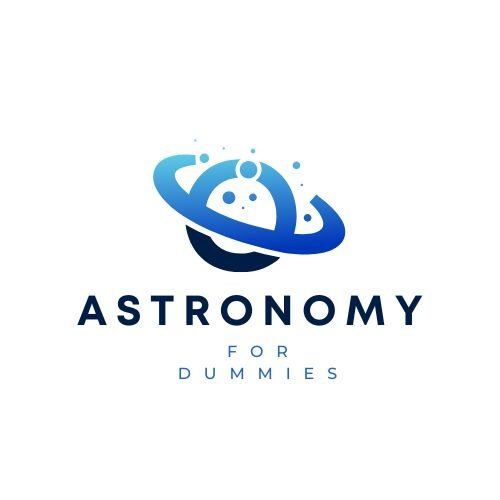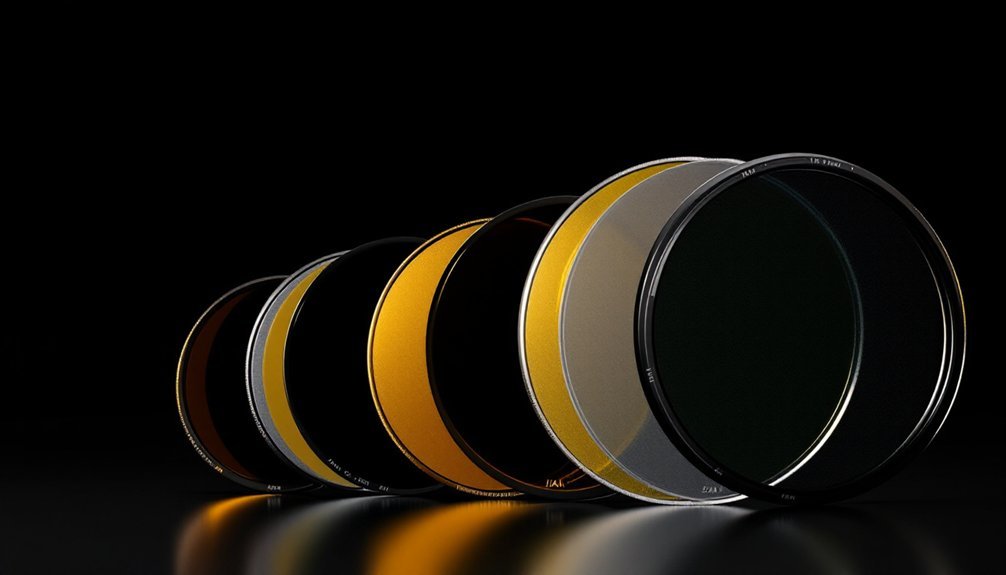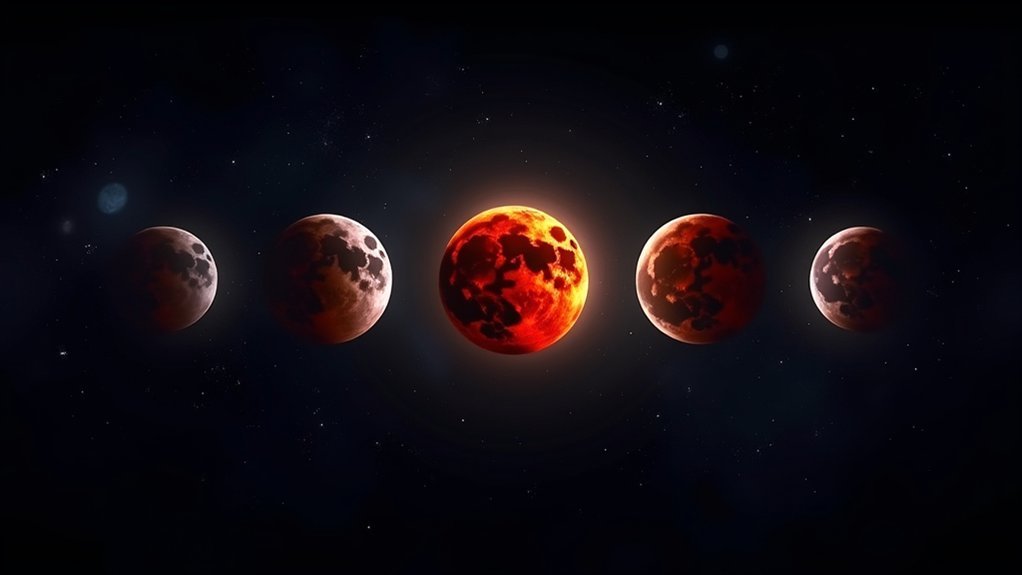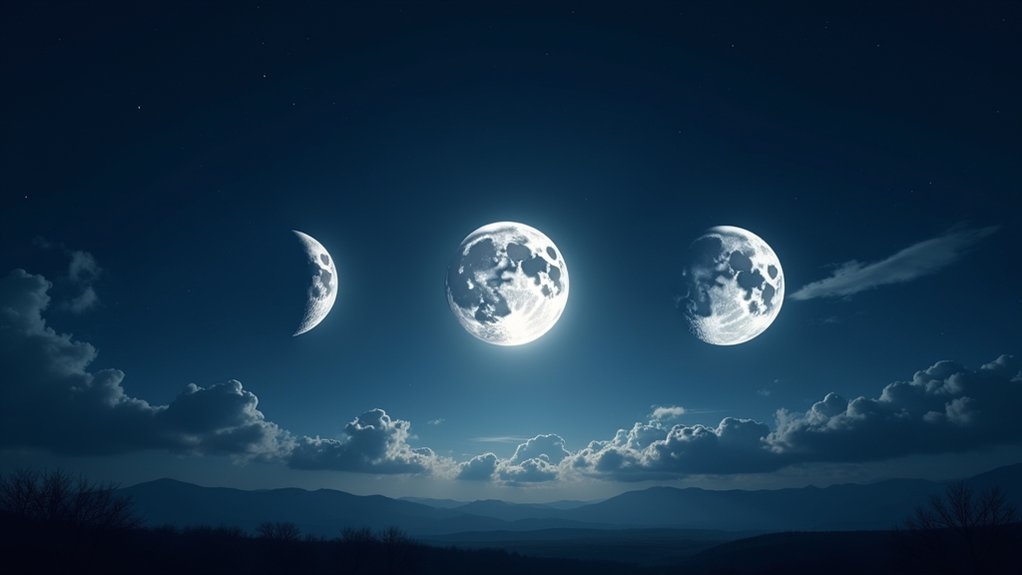If you're planning to observe the sun in 2025, you'll need more than just ordinary equipment – you'll need the right solar filter to protect your eyes and gear. Whether you're capturing the next solar eclipse or studying sunspots, these seven astronomer-approved filters offer ISO-certified protection while delivering crystal-clear solar views. From Celestron's premium EclipSmart series to Thousand Oaks' versatile filter sheets, you'll discover why these specific options have earned top recommendations from leading astronomers.
Celestron EclipSmart Solar Eclipse Telescope Filter (8" Schmidt-Cassegrain)
Celestron's EclipSmart Solar Eclipse Filter stands out as the go-to choice for owners of 8" Schmidt-Cassegrain and EdgeHD telescopes who want to safely observe the sun. You'll find it's compatible with multiple Celestron models, including the NexStar 8SE, Evolution 8, and CPC series.
With its ISO 12312-2:2015(E) certification and Solar Safe technology, you're protected from harmful IR and UV radiation while enjoying crisp solar views. The filter's dual hook and loop straps guarantee a secure fit, though you'll want to handle the thin film carefully and store it in a protective case. Backed by Celestron's lifetime warranty and expert support, it's earned a solid 4.4/5 stars from nearly 1,000 users.
Best For: Amateur astronomers and solar observers with Celestron 8" Schmidt-Cassegrain or EdgeHD telescopes who want to safely view solar phenomena like eclipses and sunspots.
Pros:
- Meets rigorous ISO safety standards and effectively blocks harmful solar radiation
- Compatible with a wide range of Celestron 8" telescope models
- Secure attachment system with dual hook and loop straps
Cons:
- Delicate filter film requires careful handling
- Storage case not included
- Limited to specific Celestron telescope models only
Celestron EclipSmart Solar Eclipse Telescope Filter (127/130 Telescopes)
For owners of popular Celestron telescopes like the PowerSeeker 127EQ and StarSense Explorer series, this ISO-certified EclipSmart filter delivers exceptional solar viewing safety and clarity. You'll get complete protection from harmful solar radiation with its Solar Safe technology that blocks 99.999% of visible light plus IR and UV rays.
The filter's orange tint provides natural solar views, perfect for observing eclipses and sunspots. You'll appreciate the secure fit with two hook and loop straps, while the safety cap protects the filter between uses. Backed by Celestron's lifetime warranty and stellar customer support, it's a reliable choice for the upcoming solar events, including the 2024 Total Solar Eclipse.
Best For: Amateur astronomers and solar eclipse enthusiasts who own compatible Celestron 127/130 telescopes and want to safely observe the sun, solar eclipses, and sunspots.
Pros:
- Meets strict ISO safety standards and blocks 99.999% of visible light plus harmful IR/UV radiation
- Secure attachment system with two hook and loop straps and protective safety cap
- Backed by Celestron's lifetime warranty and experienced technical support team
Cons:
- Only compatible with specific Celestron telescope models
- Some users report minor fitting issues with certain telescope configurations
- Premium price point compared to basic solar filters
Celestron EclipSmart Solar Eclipse Filter for Telescopes and Cameras
The versatile EclipSmart Solar Eclipse Filter stands out as an ideal choice for photographers and astronomers who need a reliable solar filter that works with multiple devices. You'll find it compatible with telescopes, spotting scopes, and DSLR cameras featuring 75-100mm objective lenses.
Made with NASA-recommended solar film by American Paper Optics, it meets ISO 12312-2:2015(E) standards and blocks harmful solar radiation. You'll appreciate its adjustable side panels and elastic band for secure fitting, plus its orange tint provides natural views while reducing eye fatigue. Though some users report fitting issues with larger telescopes, the filter's portability and 2-year warranty make it a practical choice for safe solar viewing.
Best For: Amateur astronomers and photographers seeking a versatile, safety-certified solar filter for basic solar viewing and photography with standard telescopes and DSLR cameras.
Pros:
- Meets rigorous safety standards with NASA-recommended solar film that effectively blocks harmful radiation
- Versatile compatibility with multiple devices including telescopes and cameras with 75-100mm objective lenses
- Portable design with foldable construction and includes a storage bag for convenient transport
Cons:
- Some users report difficulties with fitting instructions and installation process
- May not provide optimal results with larger aperture telescopes
- Not suitable for advanced solar observations like H-alpha viewing
Celestron EclipSmart Solar Eclipse Telescope Filter (80mm)
Solar enthusiasts seeking a reliable filter for their 80mm telescopes will find the EclipSmart Solar Eclipse Filter an excellent choice for safe sun viewing. This ISO-certified filter protects against harmful solar radiation, including IR and UV light, while blocking 99.999% of visible light.
You'll appreciate the filter's secure attachment system with three safety screws, and its orange tint delivers natural views perfect for observing sunspots and eclipses. It's specifically designed for Celestron StarSense Explorer LT 80AZ and ExploraScope 80AZ telescopes. While some users note the solar film's delicate nature, the filter's performance and US-based support from Celestron make it a solid investment for upcoming solar events.
Best For: Amateur astronomers and solar enthusiasts with 80mm Celestron telescopes who want to safely observe sunspots and solar eclipses.
Pros:
- ISO-certified safety features protect against harmful solar radiation
- Secure three-screw attachment system ensures safe viewing
- Comes with lifetime warranty and US-based expert technical support
Cons:
- Solar film material is relatively fragile and requires careful handling
- Limited compatibility primarily to specific Celestron telescope models
- Premium price point compared to generic solar filters
Thousand Oaks Optical Solar Filter Sheet (6×6)
Photography enthusiasts and amateur astronomers seeking a versatile solar filter will find exceptional value in Thousand Oaks Optical's 6×6 sheet. The silver-black polymer filter shows the sun in a natural orange color, perfect for observing sunspots and granulation.
You'll save money by creating custom filters for your telescopes, binoculars, or cameras. The material's durability surpasses Mylar, and it's backed by a five-year guarantee. With Solar Cycle 25 peaking in 2025, you'll be well-equipped to capture stunning solar phenomena.
Just remember to secure the filter firmly with sticky tape before use. It's proven effective for countless users, earning 4.6 stars from over 1,050 reviews.
Best For: Amateur astronomers and photographers looking for a cost-effective way to create custom solar filters for various optical devices while maintaining safety and quality.
Pros:
- High-quality silver-black polymer material provides clear, natural orange views of the sun and is more durable than Mylar
- Versatile 6×6 sheet allows for DIY custom filters at a fraction of pre-made filter costs
- Backed by a five-year guarantee and has excellent customer reviews (4.6/5 stars)
Cons:
- Requires DIY skills and careful modification to fit specific devices
- Must be carefully secured with tape to prevent accidents during observation
- Limited to 6×6 size, which may not be sufficient for larger optical equipment
4×4 Solar Filter Sheet for Telescopes, Binoculars and Cameras
Whether you're an amateur astronomer or photography enthusiast, Thousand Oaks Optical's 4×4 solar filter sheet offers a versatile and cost-effective solution for safe solar viewing. This black polymer filter effectively blocks harmful UV rays and infrared radiation while displaying the sun in its natural orange color.
You'll appreciate the filter's adaptability – it's perfect for DIY projects across various optical devices, from telescopes to cameras. With over 30 years of manufacturing experience and a five-year guarantee, Thousand Oaks delivers reliable protection that's stronger than Mylar. Just remember to secure it firmly with tape during use, and handle it carefully to avoid scratches. It's an economical choice that doesn't compromise on safety or performance.
Best For: Amateur astronomers and photographers seeking an affordable, DIY solution for safe solar observation through telescopes, binoculars, or cameras.
Pros:
- Versatile and adaptable for multiple optical devices, allowing custom filter creation
- Effectively blocks harmful UV and infrared radiation while providing natural orange solar views
- More durable than Mylar filters with a 5-year guarantee from an experienced manufacturer
Cons:
- Requires careful DIY assembly and secure attachment to prevent accidental detachment
- Susceptible to scratches that can affect image quality if not handled carefully
- May need periodic inspection and maintenance to ensure continued safe operation
Solar Eclipse Viewers by Thousand Oaks Optical (10 Pack)
The trusted name of Thousand Oaks Optical brings you a practical 10-pack of certified solar viewers, perfect for families and small groups planning to witness celestial events.
Each viewer features a 1×4 filter window set in a 3×5 card frame, displaying the sun in its natural orange color through NASA-approved black polymer material. You'll find these particularly convenient if you wear prescription glasses, and they're easy for both kids and adults to handle.
CE and ISO certified, these viewers guarantee your eyes stay protected while observing eclipses, sunspots, and planetary transits. Don't risk your vision with uncertified alternatives – trust the 30-year expertise of this Arizona-based manufacturer.
Best For: Families, small groups, and educational institutions looking for safe, certified solar viewing equipment to share during eclipses and other solar events.
Pros:
- CE and ISO certified with NASA approval, ensuring maximum eye safety
- Comfortable fit over prescription glasses and easy handling for all ages
- Comes in a practical 10-pack making it ideal for group viewing
Cons:
- Limited to naked-eye viewing (cannot be used with telescopes)
- Single-use design may not be as durable as permanent viewing solutions
- Higher cost compared to individual viewers when not needing all 10 pieces
Factors to Consider When Choosing Solar Filters for Safe Sun Observation
When selecting solar filters for sun viewing, you'll need to verify they meet ISO 12312-2 safety certification standards and check the material quality for any scratches, pinholes, or damage. You must guarantee the filter fits your viewing equipment properly and provides adequate light filtering capabilities to protect your eyes from harmful solar radiation. The filter's attachment method should be secure and stable, preventing any accidental displacement during observation that could expose your eyes to dangerous direct sunlight.
Safety Certification Standards
Selecting solar filters for sun observation requires strict adherence to international safety standards, particularly the ISO 12312-2:2015(E) certification. You'll need to verify that your chosen filter blocks 99.999% of visible light and has undergone independent testing to confirm its effectiveness against harmful UV and IR radiation.
When shopping for solar filters, look for products recommended by NASA and the American Astronomical Society, as they've met rigorous safety requirements. Don't rely solely on manufacturer claims – always check for proper certification markings and documentation. Before making your purchase, research user reviews and verify the filter's safety credentials through trusted sources. Remember, your eyesight is at stake, so never compromise on safety standards or use uncertified filters for solar viewing.
Material Quality Assessment
Beyond safety certifications, understanding solar filter material quality will determine your viewing experience and long-term protection. You'll want to focus on filters made from high-quality solar film that blocks 99.999% of visible light, meeting NASA's recommendations for safe observation.
Choose silver-black polymer filters over Mylar options, as they're more durable and provide superior filtering capabilities. Make certain your selected filter has passed ISO 12312-2:2015(E) testing standards, which guarantees safe direct solar viewing. When evaluating filter quality, look for materials that display the sun in its natural orange color – this isn't just about aesthetics, but also reduces eye strain during extended viewing sessions. The right material quality guarantees you'll get both peak solar event visibility and essential protection from harmful UV and IR radiation.
Proper Fit Requirements
A secure and precise fit stands as the cornerstone of safe solar filter usage. When selecting your solar filter, you'll need to verify it matches your telescope or camera's specifications perfectly. Look for models with adjustable features like elastic bands or hook and loop straps that provide a snug, gap-free fit.
Don't overlook the importance of additional security features. Choose filters equipped with safety screws or protective caps that offer an extra layer of protection. Before each viewing session, you should inspect your filter's fit and condition thoroughly. Even minor wear can compromise your safety during solar observation. If you're unsure about compatibility, check the manufacturer's specifications or consult with an expert. Remember, there's no room for compromise when it comes to protecting your eyes from direct sunlight.
Light Filtering Capabilities
When choosing solar filters for sun observation, the light filtering capability stands as your most critical safety consideration. You'll need filters that block 99.999% of visible light to protect your eyes from permanent damage. Don't settle for anything less than filters that meet ISO 12312-2:2015(E) standards, which guarantee thorough protection against harmful IR and UV radiation.
Look for filters featuring solar safe technology that provides an orange tint – this enhances your view of solar features like sunspots while maintaining strict safety standards. Whether you choose silver-black polymer or specialized solar film filters, make sure they're specifically designed for direct solar observation. The right filter will deliver a natural viewing experience while keeping your eyes completely protected from the sun's intense radiation.
Attachment Method Security
The proper mounting and attachment of your solar filter can mean the difference between safe observation and potential disaster. When selecting a filter, you'll want to prioritize models with reliable securing mechanisms like hook and loop straps or safety screws that won't detach during use.
Look for filters featuring adjustable side panels or elastic bands that guarantee a tight fit across different telescope or camera sizes. It's essential to choose filters that come with protective storage cases to maintain their integrity when not in use. Don't skip reading user reviews about attachment reliability – they'll reveal real-world performance issues you should know about. Additionally, opt for filters that have passed independent safety testing, as these products are more likely to maintain secure attachment while effectively blocking harmful solar radiation.
Durability and Storage
Because solar filters serve as critical protective equipment, their durability and proper storage directly impact your safety during observations. You'll want to choose filters made from scratch-resistant materials, with silver-black polymer options offering superior durability compared to Mylar alternatives.
When selecting your filter, look for products that include protective cases or dedicated storage solutions. These accessories aren't just conveniences; they're essential for preventing damage that could compromise your filter's effectiveness. You'll also benefit from checking the manufacturer's warranty – longer coverage often indicates better build quality.
To extend your filter's lifespan, store it in a cool, dry place and clean it only with microfiber cloths. These simple maintenance practices will help guarantee your filter remains reliable for years of safe solar viewing.
Device Compatibility Check
Selecting the right solar filter starts with precise device compatibility measurements. You'll need to measure your telescope, binoculars, or camera's objective lens diameter to guarantee a perfect fit. Don't compromise on safety by using filters that don't match your device's specifications.
Make certain your chosen filter meets ISO 12312-2:2015(E) standards and features secure attachment mechanisms like hook and loop straps or safety screws. You'll want to check that the filter's weight won't throw off your device's balance or hinder its operation. If you're using multiple optical instruments, consider investing in adjustable filters that can accommodate different lens sizes.
Remember to verify that the filter's mounting system is specifically designed for your equipment – universal filters aren't always truly universal when it comes to solar observation safety.
Professional Support Access
When investing in solar filters, professional support access becomes an essential safety net for both novice and experienced observers. You'll find that leading manufacturers back their products with thorough warranties, often including lifetime or two-year coverage that protects your investment.
Look for brands with established industry presence, particularly those with 60+ years of experience, as they typically offer reliable technical support for installation guidance and troubleshooting. You'll benefit from their ISO-certified products, which undergo rigorous independent testing to guarantee your safety. Before making your final choice, it's worth checking customer reviews and feedback about the manufacturer's support quality. The best solar filter providers don't just sell you equipment – they're there to help you use it safely and effectively through expert technical assistance.
Frequently Asked Questions
Can Solar Filters Be Used for Photographing Other Celestial Objects Besides the Sun?
You shouldn't use solar filters for other celestial objects as they're specifically designed to block intense sunlight. They'll make other celestial bodies too dark to see or photograph properly. Use appropriate filters for each target instead.
How Long Does a Typical Solar Filter Last Before Needing Replacement?
You'll get about 3-5 years of use from a quality solar filter if you store it properly. However, you should replace it immediately if you notice any scratches, pinholes, or damage to guarantee safe viewing.
What Should I Do if My Solar Filter Gets Scratched?
If your solar filter gets scratched, don't try to repair it. You'll need to replace it immediately. Even minor scratches can compromise your safety, so it's never worth risking damage to your eyes.
Are Solar Filters Affected by Extreme Temperatures During Storage?
You'll need to protect your solar filters from extreme temperatures during storage. Don't keep them in hot cars or freezing areas, as temperature fluctuations can damage the coating and compromise their safety features.
Can I Stack Multiple Solar Filters Together for Better Protection?
No, you shouldn't stack solar filters together. It can create air gaps and uneven filtration that might be dangerous. Use a single, certified filter that's designed specifically for solar viewing instead.
In Summary
You've got excellent options for safe solar viewing in 2025. Whether you're using Celestron's EclipSmart series or Thousand Oaks Optical's filter sheets, always verify ISO certification and proper fitting before use. Don't forget to inspect your filters for damage before each viewing session. With the right solar filter and careful attention to safety guidelines, you'll enjoy spectacular views of our nearest star.





Leave a Reply